
Gulf Oil Spill: Animals at Risk
Oil Pelican

A month and a half after the explosion of the Deepwater Horizon drilling rig, the oil slick it gushed into the Gulf of Mexico is lapping at shorelines in Louisiana, Mississippi and Alabama and could threaten the beaches of Pensacola, Florida within days. Offshore, oil plumes of unknown size hover under the ocean surface.
It's all bad news for wildlife in the Gulf and along its shores. Everything from miniscule plankton to enormous sperm whales is at risk, including animals on both land and sea.
Plankton
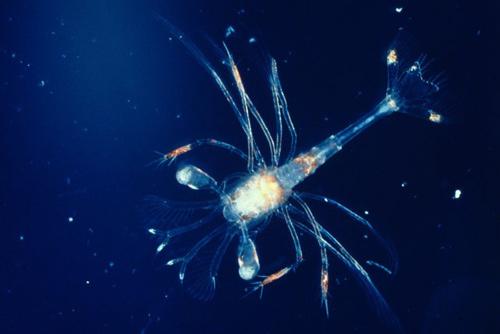
One of the greatest costs of the oil spill may also be the most invisible. Plankton are the basis of the marine food web. The word encompasses everything from algae to animal larvae. According to the U.S. Fish and Wildlife Service, oil affects algae in different ways. Some species may die, while others may bloom to excess. The loss of some species could leave fish and other ocean dwellers without a meal to eat, while the proliferation of others could use up all of the oxygen in certain water layers.
Meanwhile, oil can kill eggs and larvae, which could mean trouble for future generations of fish and crustaceans.
"We really need to be very concerned about all the little things in the water column that people don't think about," Ruth Carmichael, a senior marine scientist at Dauphin Island Sea Lab in Alabama and a professor at the University of South Alabama, told OurAmazingPlanet.
Sawfish
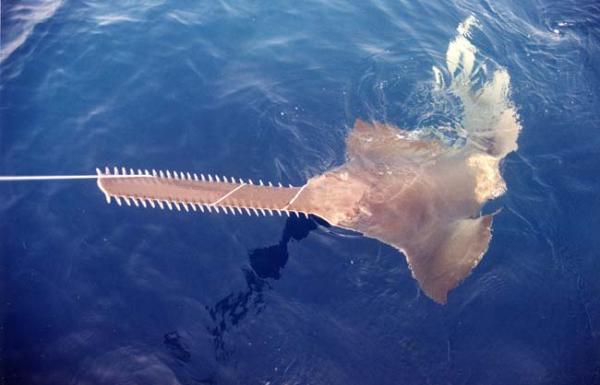
These relatives of sharks used to range from the Gulf Coast of Texas to Cape Hatteras on the eastern seaboard, but thanks to overfishing and loss of habitat, they're now restricted mostly to the Gulf.
Smalltooth sawfish are critically endangered, according to the International Union for Conservation of Nature, and their cousins the largetooth sawfish are under consideration for federal endangered status. The oil spill could be devastating to the few sawfish left in the Gulf, University of Florida icthyologist George Burgess told LiveScience this week.
"The oil spill will not only have very dire effects on such highly visible creatures as seabirds and dolphins, but also threatens a multitude of bottom-dwelling organisms including the smalltooth sawfish , which already is in considerable trouble as its range diminished and its numbers dwindled," Burgess said.
Bluefin Tuna

The western Atlantic bluefin tuna population dropped precipitously starting in the 1950s and is still in danger despite a 20-year ban on fishing for bluefin in the Gulf. A study published in May in the open-access journal PLoS One found that the waters along the continental slope off the Gulf Coast are a key spawning area for the fish. Ten to 20 percent of that spawning area overlaps with the oil spill region, Stanford marine scientist Barbara Block told OurAmazingPlanet.
Adult fish will likely be driven away by the smell of the spill, Block said, but spawning may have already occurred in oil-affected areas.
"The most delicate stages of life are the early life history stages, the egg and the hatch of the tuna," Block said. "For those stages the oil is important in the sense that the animals can't move. The eggs and the larvae get stuck there."
Oysters
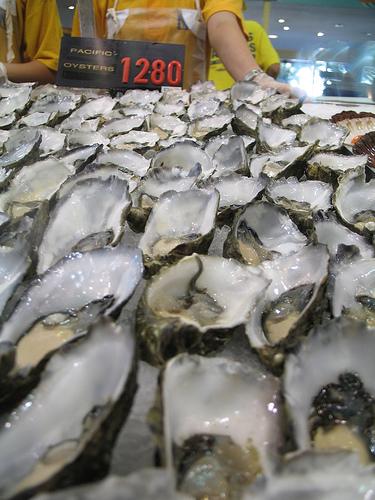
Oysters are critical to the health of estuaries along the Gulf Coast. As filter feeders, they clean water and cycle nutrients throughout the food chain, Florida State Marine biologist David Kimbro said in a June 1 statement.
"Having been decimated by historical overfishing, disease and poor water quality, natural oyster reefs are now the most degraded estuarine habitat worldwide, with only about 15 percent of global oyster reefs remaining," he said. "Unfortunately, here in the United States, we've eaten and dredged away most of the oyster habitat."
The oil spill could worsen the problem, said the University of South Alabama's Carmichael. Not only can oil affect the survival of oysters directly, it can also decrease the amount of available oxygen in the water column.
"We certainly know that the effects can be absolutely immediate," Carmichael told OurAmazingPlanet. "How long that actually affects overall growth and survival of the oysters is what we need to find out."
Shrimp

Fishing is a $2.5 billion-a-year industry in Louisiana, according to the Louisiana Shrimp Association, and the leggy bottom-feeders make up a large chunk of that business. Oil can kill crustaceans like shrimp, according to the U.S. Fish and Wildlife Service, but it can also accumulate in their tissue and poison animals farther up the food chain. Much of Louisiana's commercial fishing waters have been closed in response to the spill.
Sea Turtles
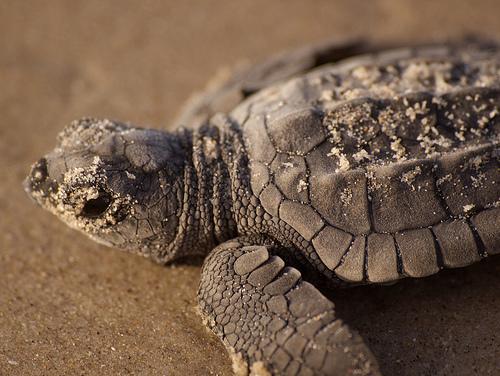
According to a May 28 U.S. Fish and Wildlife Service report, 222 sea turtles have turned up dead in the Gulf since the beginning of the spill. How many of those deaths were due to oil is unknown, but turtle strandings along the coast have been higher than usual this year, according to a June 2 update from the National Oceanic and Atmospheric Administration (NOAA). One National Wildlife Federation (NWF) scientist put the rate of turtle strandings at six to nine times the average.
A number of turtles have been pulled from the Gulf covered in oil, including 10 picked up by the Florida Fish and Wildlife Commission on June 1. That batch included eight endangered Kemp's Ridley turtles, one threatened loggerhead turtle and one endangered hawksbill.
Get the world’s most fascinating discoveries delivered straight to your inbox.
Dolphins

Nine species of dolphins regularly roam the Gulf of Mexico, according to NOAA. Dolphins in the spill zone are at risk for inhaling or ingesting oil; they're also susceptible to oil fumes, which can knock them out and cause them to drown.
As of June 1, 29 dolphins had been found dead within the oil spill area. Only one was visibly oiled, but NOAA scientists don't yet know whether it was oiled before or after its death. According to the NWF, the rate of dolphin deaths and strandings is now two to six times higher than usual.
Whales

Like dolphins, whales are vulnerable to ingested or inhaled oil. Two species inhabit the Gulf: Bryde's whale and the sperm whale. Both are at risk, but the sperm whale is especially vulnerable. The species is already endangered, and just three oil-related deaths could imperil the whole population, according to Texas Tech environmental toxicologist Celine Godard-Codding.
Manatees
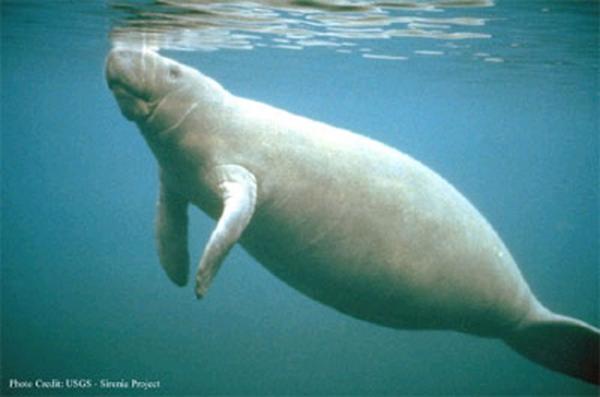
These cow-like coastal mammals spend their winters in Florida waters and migrate northwest to Alabama during the summer. There's little data on oil spills and manatees, said the University of South Alabama's Carmichael, but they could be in trouble if oil contaminates their shoreline habitat or the vegetation they eat. Manatees are also very "touchy-feely" with one another, she said, so oil on one manatee could contaminate a whole herd.
"Right now our major concern is that it's the major migration season and these animals are migrating right into the path of the oil," she said.
Horseshoe crabs
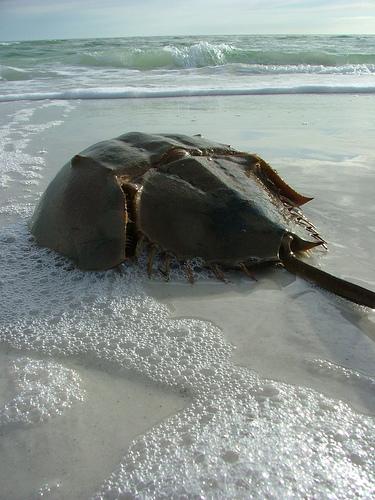
The oil spill and subsequent clean-up could be a double threat for horseshoe crabs, according to Carmichael. These bottom-dwellers are like "little vacuum cleaners," she said, feeding off organic material on the ocean floor. The crabs could easily ingest sunken tarballs and poison themselves.
Those crabs that avoid the oil could fall victim to the clean-up. Horseshoe crabs spawn along beaches, many of which are now blocked by hay bales and other materials meant to soak up oil. The beaches are also being heavily trafficked by human clean-up crews.
"There are all these things going on that are probably going to interfere with normal spawning behavior," Carmichael said.

Stephanie Pappas is a contributing writer for Live Science, covering topics ranging from geoscience to archaeology to the human brain and behavior. She was previously a senior writer for Live Science but is now a freelancer based in Denver, Colorado, and regularly contributes to Scientific American and The Monitor, the monthly magazine of the American Psychological Association. Stephanie received a bachelor's degree in psychology from the University of South Carolina and a graduate certificate in science communication from the University of California, Santa Cruz.
 Live Science Plus
Live Science Plus





